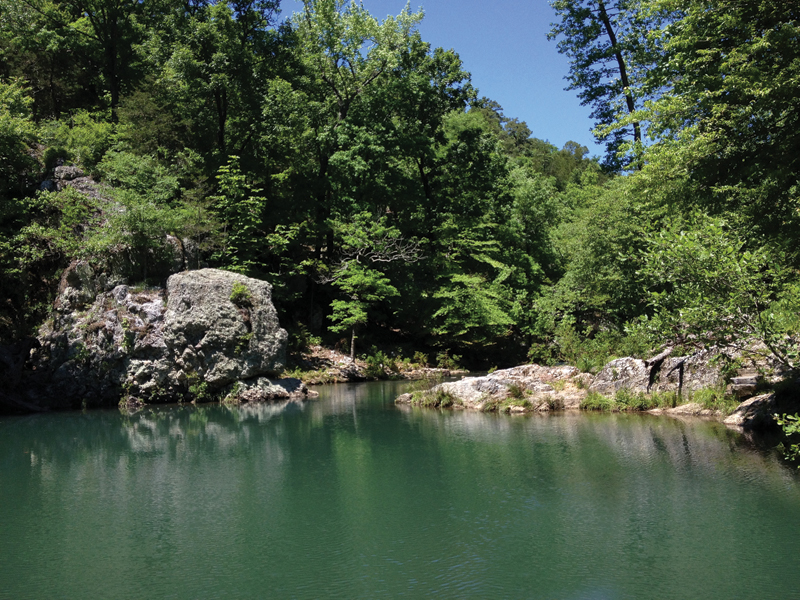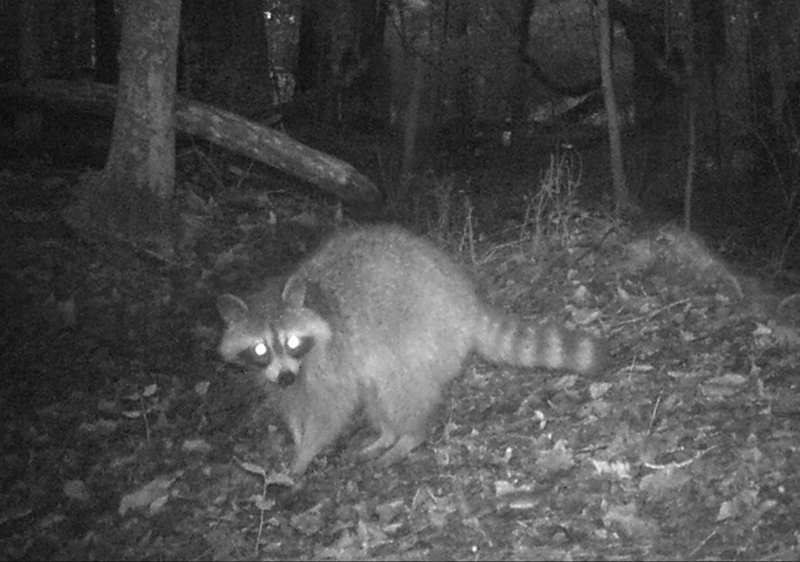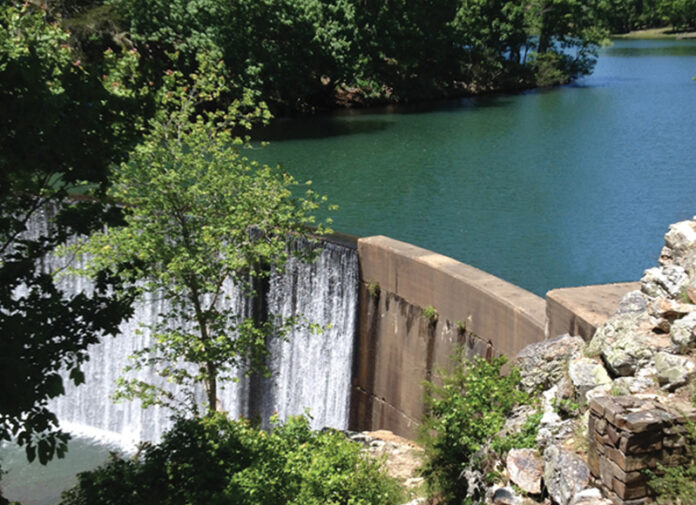Outsmarting a Thievin’ Coon
by Bill Hedrick
It was the summer of 1963. The place was the Shady Lake Campground in Arkansas, and an Eagle Scout named Hal Dial was about to introduce a young Tenderfoot to the exciting world of photography.
In those days, Boy Scouts learned survival skills, and the comforts of lodging at summer camp meant sleeping on Army cots in an Army Surplus tent. There were no dormitories and access to drinking water at Shady Lake meant using a hand-pump while bathing meant a large group of kids utilizing a swimming hole in a nearby creek. There were no showers and no flushing toilets. The main luxury was that Troop 265 from Kilgore, Texas, brought along a hired cook, someone who knew how to cook over an open fire for a few dozen boys. We never understood exactly how he managed to bake a huge, mouth-watering peach cobbler, but he did this and more.
Each day was filled with activities that included hiking, swimming, and contests to sharpen those survival skills. There were knots to be tied, fires to be made, logs to be chopped, and trails to be hiked. One entire day included a 5-mile, mostly uphill hike to a hilltop called Tall Peak where it seemed you could see forever, later racing back down through the woods instead of using the winding road. At the end of one of those hikes, we came upon a beautiful swimming hole just below the dam of Shady Lake, and everyone shed their clothes and “skinny-dipped” in the cool, clear water. Little did we realize the road coming into Shady Lake was less than 20 yards away.

There was “Indian Day” where everyone had their own Indian name… Running Bear, Flying Hawk, Eagle Eyes… mine was Buzzard Bait. It included a fishing contest with the only rule that you could not use “manufactured” fishing equipment. Everything, including string and hooks, had to be made by hand from whatever resources the forest had to offer. I fashioned a somewhat successful club from a tree limb.
At the end of each day, there was what one might describe as “chigger call” when everyone stripped down to a pair of shorts and lined up to have those chigger bites doctored with good old-fashioned Mercurochrome.
But there was a thief in our midst. The camp cook informed the Scoutmaster that food was being stolen each night from the supply tent and the culprit was successful enough to evade detection. Something had to be done. That’s when Eagle Scout Hal Dial came to the rescue. His impossible mission, as he chose to accept it, was to identify the thief.
Eagle Scouts are smart and creative. Hal decided that he would let the culprit “take his own picture” for that conclusive evidence needed to identify him. He positioned a camera a few feet up into a tree next to the supply tent and aimed it toward a spot on the ground below. Next to the camera was a dry-cell battery with wires attached to a flash bulb. For those who are unfamiliar with a flash bulb, email me and I will explain some things. The circuit from the battery to the bulb was cut, and all one would have to do is to touch the bare ends of the two wires together to complete the circuit and set off the bulb. To keep them from touching prematurely, Hal placed a popsicle stick between them with a string attached to the popsicle stick and the other end to a piece of bread on the target spot on the ground.
After the sun went down, and the sky was dark, Hal opened the shutter on the camera and let nature take its course. There were no street lights or security lights at Shady Lake, and the night sky revealed the Milky Way as well as all those constellations we were taught about in school. Then, as everyone else slept under the cool Arkansas sky, Hal set his alarm to get up before sunrise. Just as he had predicted, the bait was gone, and the flash bulb had been fired. He closed the shutter of the camera.
There were no one-hour labs in those days. We had to “mail in” film and wait to have it processed. At any rate, to a young Tenderfoot Boy Scout, the whole thing was magic. It was my first lesson on how film was exposed and how a camera could be rigged to take a picture without someone pressing the shutter. I was blown away with Hal’s ingenuity and inspired to become more like him. It was more than simply a photograph of a hungry, yet ingenious, raccoon. It was the process behind the photograph.
As the years passed, I would venture back to this magical place. The “skinny-dipping” swim hole is still there, and, yes, it is right next to the main road leading into Shady Lake. Other things have changed with time. There are rest rooms with flushing toilets and hot showers and RV sites everywhere. The open field where we pitched our tents is no longer open, filled with towering trees that are probably 40-years-old now. The old hand-pump is gone and running water and electricity is available throughout the park. Even so, I found the concrete slab where the pump once stood.

Shady Lake became the spot to go to when life gets me down and I need the peace and simplicity of nature to remind me how lucky we are to experience those things God has placed in our presence.
However, the story does not end there. One of the positive things about Facebook is that it allows us to reconnect with people from the past. I had not seen Hal since those Boy Scout days of the 1960s. In fact, I doubted if he even knew me from anyone else in those days. After all, he was one of the elite, and I was just another kid. But, by chance, I found him on Facebook!
I wasn’t even sure if he would accept a friend request from me, but he acknowledged it within minutes. Next, I sent him a message to confirm he was the same Hal Dial, Eagle Scout, from Troop 265 back in the 1960s. “One and the same!” came the immediate reply.
I went on to relate the story of the raccoon and how taking his picture had a lasting impression on me and how, many years later, I became a professional photographer myself. We talked about the method he used to “expose” that pesky raccoon over six decades ago, and I was pleased to know that my memory was “spot on” as to the method. Life was good in those days. Memories of such times have a way of warming one’s soul and brightening even the gloomiest of days. You just never know how something as simple as photographing a food-stealing raccoon can make a lasting impression on someone else.











